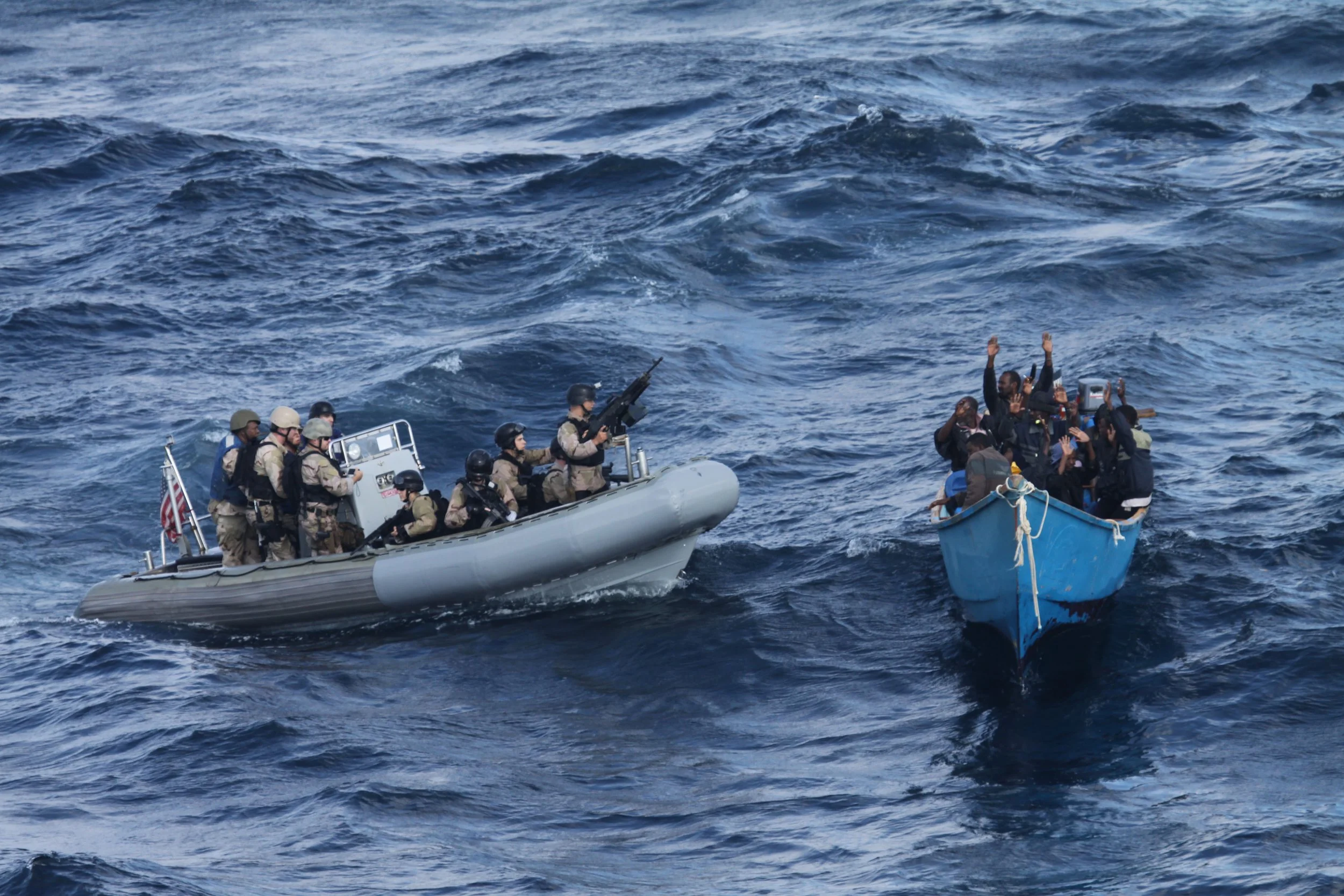Maritime Piracy in the Indo Pacific
Divya Narvekar | 24 July 2025
U.S. Pacific Fleet/Flickr, CC BY-NC 2.0
Summary
The Indo-Pacific is a vital hub for global maritime trade. Key chokepoints, such as the Strait of Malacca, Hormuz, and Bab el-Mandeb, make it crucial yet vulnerable to disruptions, including piracy.
Piracy remains a persistent low-level threat, particularly in the Strait of Malacca and around Singapore. Somali piracy is showing signs of resurgence in the Indian Ocean and the Gulf of Aden, with potential links to terrorism, exacerbating risks to shipping and supply chains.
Opportunistic thefts and minor robberies will likely continue in Southeast Asia. Limited new naval initiatives expected, but international pressure and use of Maritime Domain Awareness (MDA) tools will grow.
The Indo-Pacific reflects the evolving power dynamics and structural transformations shaping both the regional and global order. The Indo-Pacific, generally understood to stretch from the eastern coast of Africa to the western coast of the Americas, incorporating the waters and landmasses of the Indian Ocean, the western and central Pacific Ocean, comprises of 40 countries and economies, is increasingly recognised as a region of both political and military contestation, while simultaneously emerging as a key driver of global economic growth.
Asia stands as the undisputed maritime trade powerhouse, hosting nine of the world's ten most active seaports. According to the UN Trade and Development (UNCTAD), around 80% of the volume of international trade in goods is carried by sea, and the percentage is even higher for most developing countries. Similarly, the oceans remain a key concern for global security. The Indian Ocean Region (IOR) passes through major maritime chokepoints, including the Strait of Malacca, the Strait of Hormuz, and the Bab-el-Mandeb Strait, which control access to key shipping lanes and global supply chains.
Piracy is one of the most frequent threats in the Indo-Pacific. Somali pirates have played a significant role in shaping the piracy landscape in the Indian Ocean, particularly from the early 2000s to the mid-2010s. The threat of Somali piracy has shown signs of re-emergence. The number of attacks on commercial ships has increased since 2023, resulting in widespread disruptions and diversions. In addition, Somali pirates have known associations with terrorist groups such as Al-Qaeda, supplying weapons to or becoming a source of finance for (regional or international) terrorist organisations.
The Indo-Pacific region is a pivotal maritime crossroads of global significance, where vital maritime pathways and economic strength intersect, forming the essential structure of global trade and international security. While the Indo-Pacific region is generally stable, it faces several maritime security challenges. The Indo-Pacific contains the world’s busiest sea lanes: roughly 60% of global maritime commerce transits these waters. Disruptions – even opportunistic robbery – can ripple across supply chains. Even in Southeast Asia, where piracy is mostly theft, each incident adds indirect costs: ships slow down (under local guidance), crews undergo extra drills, and carriers invest in hardened security (barriers, vigilant lookouts). While direct economic estimates for current Indo-Pacific piracy are scarce, increased shipping risk leads to higher insurance and operating costs, which are passed on to importers and consumers. As noted, insurers charge extra for transits through high-risk waters.
Though piracy in Southeast Asia has decreased in frequency compared to historical highs, incidents continue to occur, especially in areas such as the Singapore Strait and parts of the Sulu-Celebes Seas. The Regional Cooperation Agreement on Combating Piracy and Armed Robbery (ReCAAP) reported up to 80 incidents of piracy and armed robbery in Asia in 2023, many of which involved opportunistic theft. While these incidents are rarely violent or involve hijackings, the cumulative cost is substantial: vessels reduce cruising speeds, adhere to rerouting protocols, and invest in hardening measures such as razor wire, bridge protection, and onboard security training.
Initiatives such as ReCAAP, Indonesia–Malaysia–Philippines Trilateral Patrols, and QUAD-led maritime domain awareness (MDA) programs have enhanced regional maritime governance. However, this success has led to displacement rather than elimination of illicit maritime activity. Criminal networks have adapted, shifting from opportunistic piracy to more organised forms of transnational maritime crime, such as trafficking in narcotics, arms, people, and illegal fishing.
Forecast
Short-term (Now - 3 months)
Piracy in Southeast Asia is likely to remain endemic at low levels, with near-weekly robberies in SOMS. Opportunistic thefts in the Straits and Bay of Bengal will persist, with continued emphasis on surveillance and crew vigilance.
Medium-term (3-12 months)
Southeast Asian navies plan no major new anti-piracy initiatives beyond existing patrols, so robberies are likely to remain at current levels. International bodies may tighten standards: the IMO’s new Circular on “piracy awareness” for the Malacca region (expected to be released late 2025) will prompt coastal states to share intelligence and enforce arrest regimes.
Shipping firms, anticipating these trends, will increasingly incorporate maritime domain awareness (MDA) tools (AIS monitoring, radar networks).
Long-term (>1 year)
Over the next 1–3 years, it is almost certain that structural shifts will shape the piracy threat. Technological change is the biggest factor: navies and shipping will heavily adopt AI-enabled surveillance and unmanned assets to enhance monitoring capabilities and serve as an early warning system.



